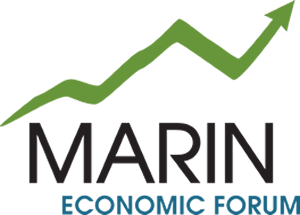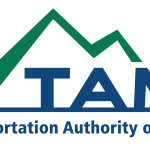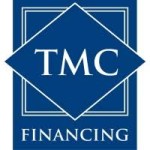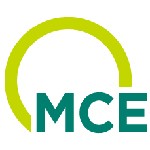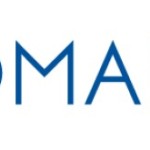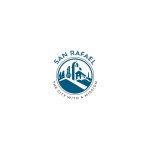Unemployment turning a corner in Marin? Economist sees positive signs
Upbeat signs observed last month in Marin County’s economy could be indications things are improving, an economist suggests, just as the county prepares to reopen more businesses Monday.
Speaking on a Marin Economic Forum webinar Thursday, Robert Eyler, Ph.D., chief economist for the forum , said any positive turn could be dampened by a major spike in COVID-19 cases and a return to more restraints on business.
And on the same day he was speaking, the county recorded its highest single day spike in COVID-19 cases – 54. Then on Friday afternoon, the county announced to delay plans to allow some businesses, such as hotels, to reopen starting Monday. Other places, like hair salons and barber shops, will be allow to welcome visitors back.
Unemployment claims
Even with the latest virus setback, Marin’s initial unemployment insurance claims are slowing down, “along with a reduced number of job losses that could also be aided by retirements,” said Eyler, who is also professor of economics at Sonoma State University. “It appears we may be turning the corner on unemployment.”
Initial claims for unemployment insurance were higher in Marin County than in Sonoma and Napa Counties in April and May, but on par with Sonoma in March, according to the California EDD.
Last month, U.S. unemployment rose to 13.3% of the workforce with 17.7 million jobs lost since May of 2019. In California, the unemployment rate stood at 16.3% in May, with 3.066 million jobs lost since the same month a year ago. At the same time Marin’s unemployment rate was 10.3% in May 2020 with 21,700 county resident jobs lost since the same month a year earlier.
Job losses
Comparing last month to May 2019, the county had suffered major job losses by hotels, bars and restaurants (-43.4%). Retail trade showed the next highest loss (-20%) for Marin. The information sector, and total non-farm job losses were both down (-15%) since May 2019 in the county.
California EDD data going back to the pre-COVID era showed relatively high job openings posted in March 2020 within Marin County for occupations such as registered nurses (203 job ads), retail salespersons (200), first-line retail sales worker supervisors (177), secretaries and admin assistants (122), sales representatives (120), customer service representatives (111) and software developers (108).
The cities with the most job ads four months ago included San Rafael (2,332), followed by Novato (1,135), Corte Madera (463) and Mill Valley (432). While this is old data, it serves as a guide to possible openings, and in what locations, today, he said.
In general, coming out of shelter-in-place mandates, the job market is opening up for new hires as well as rehiring employees laid off or furloughed. “We don’t yet know exactly how many businesses were closed or lost in the second quarter, impacting their ability to generate taxable sales, but demand for household goods is spiking along with the need for service personnel.”
Tale of three policies
Eyler commented that what we are experiencing today is a Tale of Three Policies. Social policy is the major influencer affecting business stability and growth more than federal monetary policy or state and local fiscal policy. However, once social policy begins to fade, the other two stimulators will become bigger and have greater impact.
“Trying to conserve jobs at the front end of the pandemic led to business shut downs. We don’t want to see another round of employment cuts and need to bring jobs back quickly. The issue of how keep people in jobs during a crisis is tricky and calls for prudent solutions that involve finding innovative ways to keep people working. If we don’t do this, it could destabilize the business sector,” Eyler said.
He pointed out that the downward economic spiral experienced since March leading to a loss of capacity started with job losses as a first reaction which triggered other problems if businesses were not rehiring. This contributed to business losses (which can occur simultaneously with initial job losses) that changed capacity. When businesses fail, further job losses result in what Eyler called “Labor Force Devolution” — a loss of capacity on both sides of the market.
Housing forecast up
Eyler observed that housing prices and forecasts were looking better in May as the number of days homes for sale were on the market fell to 30+ days in May from approximately 70 days in March. Demand also picked up, as lower interest rates continued to stabilize demand and supply.
The percentage change in home prices, compared to past prices of post-sale median housing prices in selected areas, was up over 70% in Marin this May compared to a 1.4% rise a year ago and a 2.1% rise two years ago, according to Zillow research. Eyler expects slow movement through the rest of 2020 for housing, noting that forecasts do not as yet factor-in the possibility of Great Recession part II.
Forum CEO Mike Blakeley said of the area real estate market, “Inventory is up along with pent up demand, and late spring and summer are the usual months when many people want to relocate. The market is hot right now with more single-family homes open for viewing by potential buyers now able to get out to see them.”
Construction permits rebound
Flat construction permit activity is good for the supply side, in Eyler’s words, but has a mixed impact on construction growth, which is also being impacted by a shortage of labor, materials and supplies. Construction permits submitted in Marin were up on May 20 (above 500) to levels not seen since December 13, 2019.
“During the Great Recession there was a flight of construction workers away from the North Bay increasing the need for workers imported from other counties. Construction has become a supra-regional activity, but most workers really do not want to drive 100 miles a day to/from worksites – especially if ride sharing is a big health risk,” Eyler said.
Shift to digital platforms
Hiring firms are showing greater interest in those who can enable businesses to develop more digital e-commerce platforms and a video online marketing infrastructure, technology that quickly became the primary direct-to-consumer sales tools adopted by many businesses during the lockdown.
If this trend continues after recovery, it will increase demand for new application developers, webmasters, social media specialists, video marketing consultants and interactive IT professionals. Digital marketing is trending up beyond the services sector and now includes mid-range and higher skilled jobs.
Telework growing
Once only an option for a few independent contractors, the remote working model gained a major boost during the economic crisis increasing the likelihood that it may continue to expand. Eyler potentially sees this as increasing demand for jobs that can be performed remotely, including accounting functions, bookkeeping and other specialties needed by businesses that can be performed offsite.
Reshaping the workplace
“The Marin Economic Forum is focusing on how traditional sectors within the Marin economy are going to be reshaped given what happened between March 18 and May 15. Even before SIP, there was a high number of Marin residents working from home,” Blakeley said.
He said “the nature of the workplace is changing, however studies show that many want to get back to the office for face-to-face meetings and enjoy the workplace culture, and some are suffering from Zoom fatigue. Will there be a redesign of the workplace – yes.”
The health crisis and the ongoing need for social distancing may fuel demand for workplace interior redesign away from the open seating concept to more offices, walls, cubes and partitions separating workers.
Increasing space between employees reduces risks associated with close personal contact, and can also fast-track tenant improvements to upgrade existing stock, while increasing work-related projects for interior designers, architects and contractors.
It might also result in locating more offices in the suburbs, as part of a de-densification program moving workplaces away from inner cities, which could enhance opportunities for attracting employees who prefer not to commute long distances.
“The Marin Economic Forum is monitoring a wide range of issues impacting the county’s business environment and is actively engaged in strategic efforts to reopen the local economy,” Blakeley added. “This includes encouraging businesses to go to the Marin Recovery data tool at marineconomicforum.org/marin-recovery-index to view a list of guidelines including sections devoted to performing detailed risk assessments and how to implement site-specific protection plans.”
Be the first to receive updates and news from MEF by subscribing or liking us on our social media pages: Facebook, Twitter, and LinkedIn!
